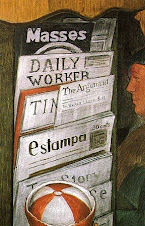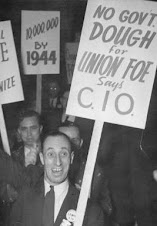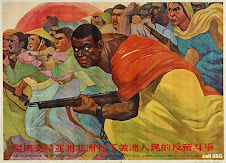
By Berta Joubert-Ceci
Published Dec 15, 2010 9:50 PM
Some 15,000 people marched through the streets of San Juan, Puerto Rico, on Dec. 12, ending at La Fortaleza, the governor’s residence. They demanded the elimination of the $800 special quota the University of Puerto Rico administration imposed that would increase student’s tuition starting January 2011. Red balloons throughout the march symbolized the 10,000 students who would have to abandon their studies if the quota takes effect.
Students and professors called the demonstration as part of the continuing struggle against the colonial government’s attempt to privatize public education and other essential services. A week earlier, students held a 48-hour system-wide stoppage to try to force the administration back to the negotiating table.
Last summer students occupied most of the 11 UPR campuses throughout the island. That occupation ended in a student victory, with the promise from the government that the campuses would not be privatized and the special quota would be dropped in August. But the government immediately tried to overturn the agreement.
In a fast-track imposition, Governor Luis Fortuño increased the number of members of the UPR’s Board of Trustees from 13 to 17. He appointed four people close to his administration so he could have more leverage to overturn the June agreement. The students vowed to continue the struggle, and today it is clear that they are keeping that promise.
The university struggle is related to the class war the island’s current neoliberal governor launched against the Puerto Rican people. This relationship is revealed in the ubiquitous slogan “UPR es un país” (UPR is the country). The student’s struggle has the support of their families, high school students, teachers, unions, social organizations and the vast majority of the people on the island who see the UPR struggle as not only affecting students but involving other demands such as jobs and services for all.
Both the UPR administration and the island administration use the worldwide economic crisis and Puerto Rico’s financial crisis as a pretext for this attack on public education. They say that there is no money. But this is far from true. The students have issued a detailed, workable proposal to rescue the university, but two administrations have rejected it.
In a Fortuño interview on Dec. 9 with Radio Noti Uno, he revealed the government’s real intentions: “The University of Puerto Rico must be a place of academic excellence where our future generations obtain their dream, not a place of political activism of the left.”
Fortuño tried to justify the current police presence on the campuses. Police had been barred from the campuses after the bloody confrontations in the late 1970s when police killed students during a strike. In a very ominous precedent, the government has again opened up the danger of criminal violence against students by removing fences that secured the university, making the campus a dangerous, open zone.
Interview with student leader
On Dec. 13, the day before an indefinite university strike is scheduled to begin, Workers World spoke with Giovanni Roberto, a student leader from the Rio Piedras campus. Roberto commented on the police presence and students’ actions in the future.
He said that according to the media, UPR President José de la Torre is willing to negotiate with the students, but not with those representing the participants in the struggle. Instead, he’ll meet with student councils presidents who are not involved in the struggle. Roberto warned that the administration will declare the strike illegal.
Roberto continued: “There is a new scenario now. It has changed since last summer’s strike. First, there are no gates and those that remain have been welded. When the students occupied the campus last Wednesday night [Dec. 8], there were many police inside a mobile police headquarters, and they talked a lot about installing security cameras. This is their modus operandi in the poor neighborhoods, and it is important to show this class link. This is the way they operate against the opposition, the poor, the marginalized and against the Blacks in this country.
“With all probability this strike is not going to be like the last strike. It will not be a strike of gates because there are no gates. It is not going to be a strike of barricades inside the campus as we did during the 48-hour stoppage. With all probability it is going to be a very movable strike. It is going to be a different strike.
“We are calling now for a week of solidarity with the UPR, and we are going to establish two peoples’ encampments, one in front of the Ponce de Leon Avenue and another behind. They are going to be permanent during this week. We are calling on the people to come and support those encampments, so that the people can keep watch to see what happens inside the campus.”
A message to students in the U.S.
Roberto ended with a message to the students in the United States who are also struggling against privatization. “Do not dismay. It is important in spite of the highs and lows that the processes of struggle have, that a core of people keep that process alive, so that the possibilities of that core becoming a larger mass movement become a reality. For us this has been very instructive. Sometimes the core is reduced, and the number of people who come to a demonstration is reduced. But it is important to keep up the propaganda. When the moment arrives to agitate, that propaganda is cumulative, and it becomes agitation. It is very important to simply stay in the fight.
“If there are plans to have a strike, there is a need to talk with as many people as possible and to explain why that process is the necessary one to stop the advance of the government, the privatization offensive.
“As a socialist and internationalist, I find the international links very important. For me, the struggle of all the oppressed sectors is the same fight wherever one is, and those links are there, even if they have not materialized in coordination. It is important for us that if there are similar struggles in other places, global capitalism’s offensive against public education becomes weaker.
“Fortuño is using the examples of the universities of the United States to put police inside the campuses. That is what he says. This is going to look more and more like a university in the U.S. As long as there are students in the U.S. also demonstrating, who do not want that same privatized university, that university full of police, the struggle is strengthened.”
bjceci@workers.org
Articles copyright 1995-2010 Workers World. Verbatim copying and distribution of this entire article is permitted in any medium without royalty provided this notice is preserved.










































No comments:
Post a Comment